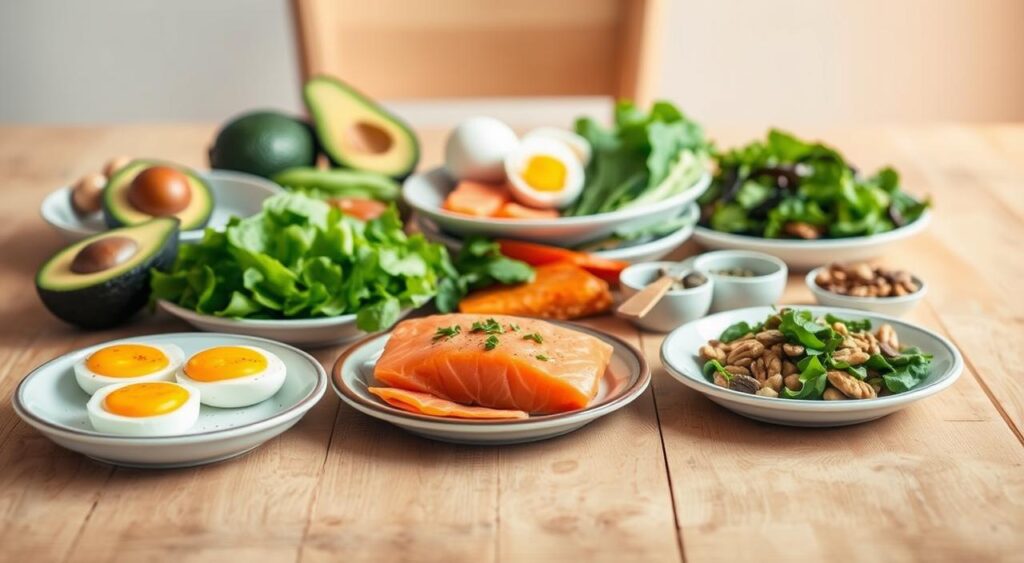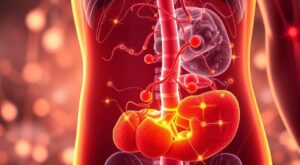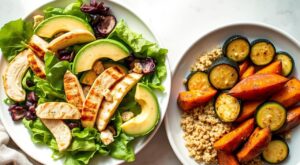Are you ready to challenge everything you thought you knew about dieting? The low carb diet for beginners could be your key to unlocking a new approach to weight loss. This beginner low carb diet offers a straightforward path, allowing you to shed pounds while enjoying delicious meals. Whether you’re new to cooking or simply looking for easy recipes, starting a low carb diet can be seamless and rewarding.
In this article, you’ll uncover the fundamentals of a low carb diet tailored for you. You’ll also get a 7-day meal plan to kickstart your weight loss journey. Recent research supports this approach, and you’ll find essential tips for transitioning to low carb eating. So, are you ready? Let’s dive into a world of flavors and health benefits that may just transform your meals and mindset.
For more guidance, you can check out this comprehensive resource on low carb meal to help you along the way.
Understanding the Low Carb Diet Basics
A low carb diet is a popular choice for weight loss and better health. It limits carbs and focuses on proteins and healthy fats. This guide helps beginners understand why it’s effective and why many choose it.
What is a Low Carb Diet?
A low carb diet cuts down on foods high in carbs, like pasta, bread, and sugary snacks. Each diet has its own carb limits, from keto to Atkins. It aims to lose weight and improve health by changing what you eat every day.
Benefits of a Low Carb Diet
Low carb diets offer many benefits. They help with weight loss, keep blood sugar stable, and improve heart health. They ensure you get enough protein and fiber while avoiding hunger.
Common Misconceptions
Many myths surround low carb diets. Some think they cut out all carbs or are unhealthy. But, they can include healthy carbs from veggies and some fruits. Worries about losing muscle or not getting enough nutrients are also unfounded with a balanced diet.
How the Low Carb Diet Affects Your Body
It’s key for beginners to understand how a low carb diet works. This diet can start big changes in how your body works, like ketosis. Knowing these changes helps you see the good sides of a low carb life.
Ketosis Explained
Starting a low carb diet might put your body into ketosis. In ketosis, your body uses fat instead of carbs for energy. This happens when you eat fewer carbs, making your liver turn fat into ketones.
Ketones then become your main energy source. This can make you feel more energetic and clear-headed. Plus, it helps you lose weight faster and keeps your energy up.
The Role of Insulin
Insulin is very important in a low carb diet. It helps control blood sugar levels after eating carbs. A low carb diet tries to lower insulin spikes from eating too many carbs.
This can make your energy more stable and help you store less fat. Knowing how insulin works is key to understanding a low carb diet. It makes it easier to adjust to this new way of eating.
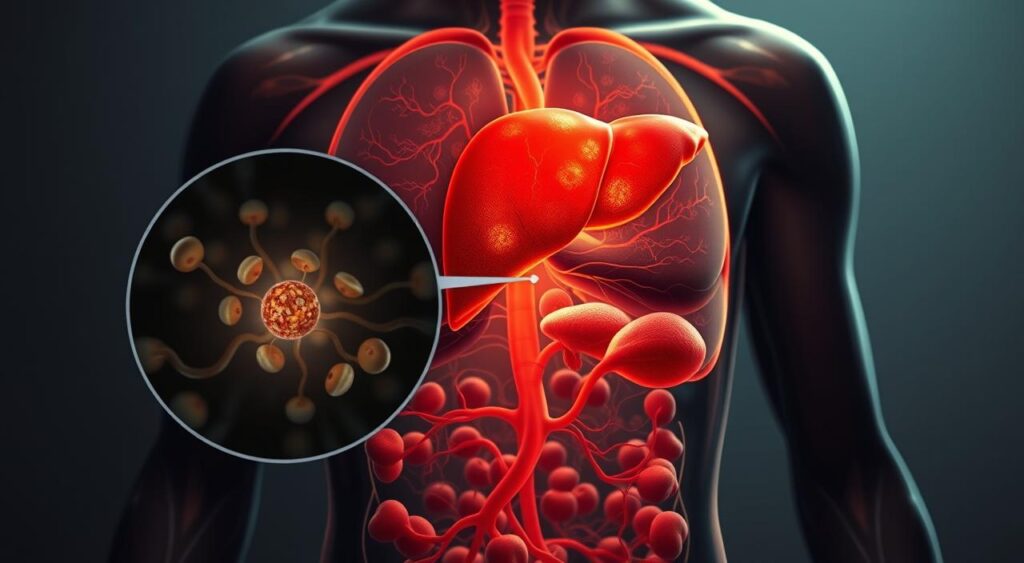
Essential Foods for a Low Carb Diet
Creating a successful low carb diet starts with choosing the right foods. It’s important to include different food groups. This ensures you get all the nutrients you need while keeping carbs low. Here are some key food categories for a low carb diet.
Protein Sources
Protein is key in a low carb diet. It helps keep you full and satisfied. Choose high-protein foods like:
- Lean meats like chicken and turkey
- Fish varieties such as salmon and tuna
- Eggs, known for their versatility
- Plant-based options including tofu and tempeh
- High-protein dairy choices like Greek yogurt
Healthy Fats
Healthy fats are also essential. They give you energy and make your food taste better. Some must-have fats are:
- Avocados, rich in heart-healthy monounsaturated fats
- Olive oil, perfect for cooking or dressings
- Nuts and seeds, providing crunch and nutrition
- Fatty fish, like salmon, full of omega-3 fatty acids
Low Carb Vegetables
Non-starchy vegetables are great for your diet. They add nutrients without too many carbs. The best ones are:
- Leafy greens like spinach and kale
- Cruciferous vegetables such as broccoli and cauliflower
- Zucchini and bell peppers for flavor
- Cucumbers and asparagus for a refreshing crunch
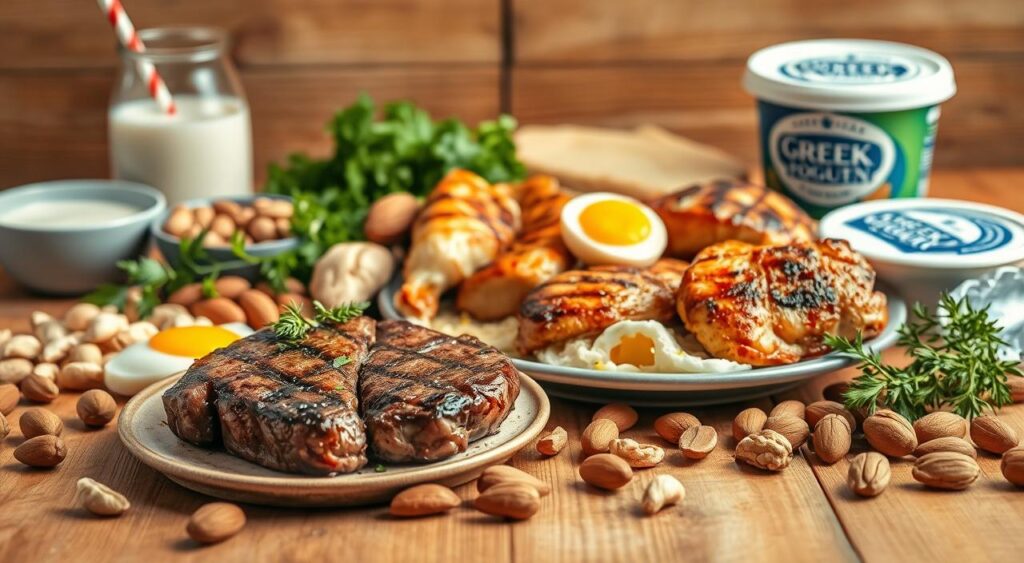
Foods to Avoid on a Low Carb Diet
Following a low carb diet means watching what you eat closely. Some foods high in carbs can slow down your progress. It’s key to avoid them to manage carbs better and enjoy your meals.
High Carb Foods
Focus on avoiding foods high in carbs. These include:
- Refined grains like white bread and pasta
- Sugary drinks, including sodas and flavored coffee
- Pastries and desserts full of sugars
- Starchy vegetables like potatoes and corn
Removing these foods cuts down on carbs. This helps your body move towards a low carb state.
Hidden Sugars
Identifying hidden sugars in foods is another challenge. Always check ingredient labels. Many healthy-looking products have added sugars.
Choose fresh, whole foods to avoid hidden sugars. This helps stick to your low carb diet. Look for products with natural ingredients and avoid processed foods to control carbs better.
Creating Your 7-Day Low Carb Meal Plan
Setting daily calorie goals for low carb is key for weight loss. Aim for 1,200 to 2,000 calories a day. This balance helps you lose weight and stay full of energy.
Learning about meal planning is important. It helps you stick to your 7-day plan.
Daily Calorie Goals
Now that you know your calorie goals, plan your meals. Track calories and macronutrients. This helps you make smart food choices.
Remember, adjust your calories based on how active you are and your weight loss. This ensures the best results.
Sample Breakfast Ideas
Start your day with tasty low carb breakfasts. Try:
- Scrambled eggs with spinach
- Greek yogurt with fresh berries
- Overnight chia pudding soaked in almond milk
These meals are low in carbs and quick to make. They give you the energy to start your day right. For more meal ideas, check out this resource.

Lunch and Dinner Ideas for Beginners
Finding tasty low carb meals is easy and rewarding. You can make dishes that are both satisfying and healthy. This section offers beginner meal ideas for a smooth transition to a low carb lifestyle.
Easy Low Carb Lunch Recipes
For lunch, try protein-packed salads to stay energized. Grilled chicken or salmon on mixed greens is a great choice. Vegetable dishes like zucchini noodles with marinara sauce are also excellent.
Cauliflower rice bowls are a favorite. You can add your favorite protein and veggies to make it your own.
Delicious Low Carb Dinner Options
Dinner is a chance to try new, flavorful low carb dishes. Baked chicken with roasted veggies is a healthy choice. Stir-fries with beef and veggies are quick and easy.
Many of these meals are great for meal prep. This makes it easier to eat healthy even when you’re busy.
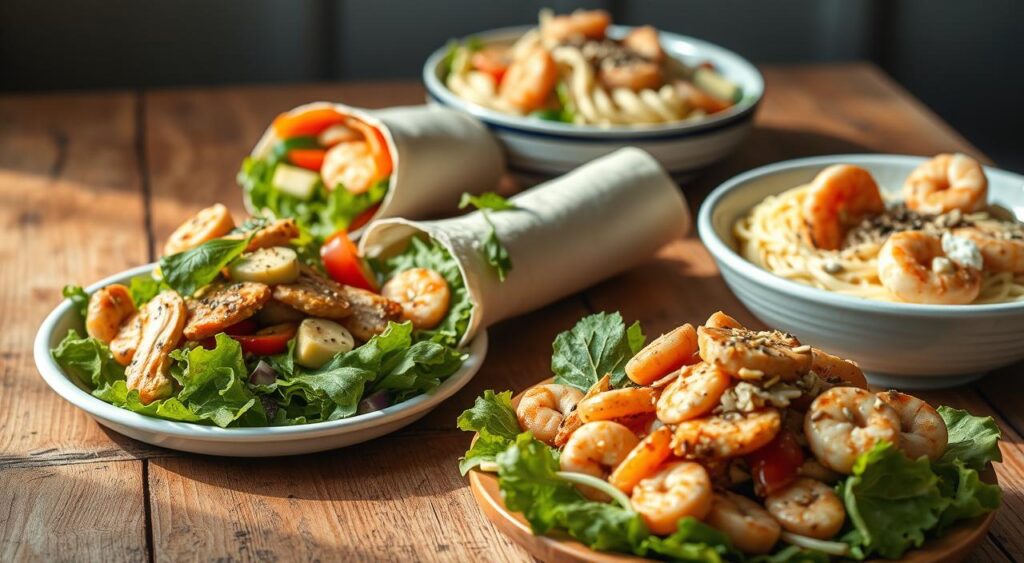
Snacks That Fit Your Low Carb Lifestyle
Keeping to a low carb diet doesn’t mean you have to miss out on snacks. In fact, adding low carb snack suggestions to your day can keep you full and energized. You can pick from many tasty options that also fit your diet. Here are some easy-to-add snacks for beginners to your meal plan.
Healthy Snack Ideas
- Hard-boiled eggs – Packed with protein and easy to prepare.
- Greek yogurt – Look for unsweetened varieties to keep carbs low.
- Mixed nuts – A great source of healthy fats.
- Fresh veggies (carrots, celery, bell peppers) with hummus – Refreshing and crunchy.
- Guacamole with cucumber slices – A delicious low carb dip option.
Quick and Easy Choices
When time is short, quick low carb snacks are key. Here are some easy snack options that need little to no prep:
- Cheese sticks – Convenient and satisfying.
- Nut butter single servings – Perfect for on-the-go.
- Sliced cucumbers with cream cheese – Crisp and creamy combo.
- Olives – Simple yet flavorful.
- Beef jerky – Just watch for added sugars.
Having these low carb snack suggestions on hand makes your journey easier. It keeps you on track with your healthy eating goals. Explore the variety and find your favorites among these healthy snacks for beginners. Snacking wisely will help you feel great and enjoy the perks of a low carb lifestyle.
How to Stay Motivated on Your Low Carb Journey
Staying motivated on a low carb diet is key to success. Tracking your weight loss progress helps you see your journey’s milestones. Use tools that fit your style to make tracking a daily habit.
Track Your Progress
Tracking your low carb diet means logging meals, weight changes, and how you feel. Use apps or diaries to track food and energy. Celebrate small wins to stay on track and motivated.
- Food journals: Write down everything you eat and drink.
- Weight trackers: Monitor your weight weekly to visualize your progress.
- Fitness apps: Many apps provide easy logging for low carb foods and calorie intake.
Join a Support Group
Connecting with others is a great way to get support on your low carb journey. Joining support groups lets you share experiences and get encouragement. It’s a great way to stay motivated.
- Online forums: Many websites host discussions specific to low carb diets.
- Social media groups: Platforms like Facebook have groups for sharing your journey.
- Local meetups: Find local groups for in-person support.
Adjusting Your Low Carb Diet for Long-Term Success
Starting a long-term low carb diet means knowing how to move into the maintenance phase. This phase lets you slowly add back some carbs while watching your weight. The goal is to find a balance that keeps your progress going.
Pay attention to how your body reacts to different carbs. This helps you create a lifestyle that works for you.
Transitioning to Maintenance
Switching to the maintenance phase needs careful planning. Start by slowly adding carbs to avoid quick weight gain. Keep an eye on your carb servings and choose whole foods.
Be aware of any weight changes. This helps you make the right adjustments. Periodically tweak your diet to meet your goals and lifestyle, staying low carb.
Potential Challenges
You might face challenges like social events or cravings. To deal with these, have low carb options ready for parties. Also, find healthy alternatives for cravings.
These strategies help you stay on track with confidence. They make your transition smoother.
Helpful Resources for Beginners
Starting a low carb diet can feel overwhelming. But, there are great resources to help you out. Beginner low carb cookbooks offer fresh ideas and inspiration for meal planning. Look for cookbooks that focus on low carb recipes for beginners. They usually have detailed ingredient lists and simple instructions.
Low Carb Cookbooks
There are many excellent beginner low carb cookbooks out there. Titles like “The Low Carb Cookbook” offer easy, delicious recipes. These cookbooks provide meal plans to help you stick to your diet.
Online Communities
Connecting with others can make your low carb journey better. Online low carb communities offer support, ideas, and recipe sharing. Websites, forums, and social media groups connect you with experienced dieters. They share valuable insights and tips. Check out guides on low carb diets to learn more.
Frequently Asked Questions About Low Carb Diets
Starting a low carb diet might raise some questions. You might wonder about its safety and how to handle cravings. It’s important to know that a low carb diet can be safe if done right. Eating whole foods is key. Always talk to a doctor if you have health concerns.
Is a Low Carb Diet Safe?
The safety of low carb diets depends on how you do it. Make sure you get enough nutrients and watch your calorie intake. Eating whole foods is a good start. Many people see health benefits from this diet. But, if you feel uncomfortable or have health issues, adjust your diet.
How to Deal with Cravings?
Cravings can be tough when you’re on a low carb diet. To fight them, drink lots of water, eat more protein, or have a small low carb snack. Being mindful of your cravings can help too. Having supportive friends and communities can make your diet easier to stick to.

